
Part I
My father always said, American politics acts like a pendulum.
It swings to the left and right, at its edges, but seems to course correct before going too far in either direction.
In general, I agree with him.
But my Dad also said that Trump would be removed from office within his first year. (He was sure of it.) As did my brilliant, former graduate-school professor, and he has a PhD.
Each went so far as to pick out a 3 month window during which Trump would go down in 2017.
Honestly, though, I never believed it.
Not for a second.
I countered that no matter how guilty Trump was, no matter how obvious the crime, Republicans would always have to fold en masse for Trump to go down, and I didn’t see it happening.
No matter what.
“If the Republicans won’t turn on him, they can’t convict him in the Senate,” I said, “which means he can do whatever the fuck he pleases.”
And here we are, in 2019.
So it’s no surprise that Bob Mueller comes out and says that he didn’t charge the President because he didn’t have the constitutional authority. And then he drops, “When a subject of an investigation obstructs that investigation…”
It’s been noted that that Mueller said, “when,” not “if,” while beseeching everyone to take him at his literal word.
So we wonder how much further it can go, this erosion of our checks and balances?
Do the Republicans want to control everything forever?
One party rule?
Now Trump is again “joking” about serving 4 or 5 terms.
At what point do we take that seriously?
Countries that support one-party rule are not democracies, nor republics. They’re autocracies, or communist entities, or totalitarian states.
A healthy America needs two healthy political parties.
These days, it’s hard not to wonder if our system will withstand the Trump years?
Part II
I stayed with my buddy Hugo in London last week. (He made appearances in the column in 2012 and ’13.) Hugo will turn up in the London stories, for sure, though his black Porsche has been sold, I’m afraid.
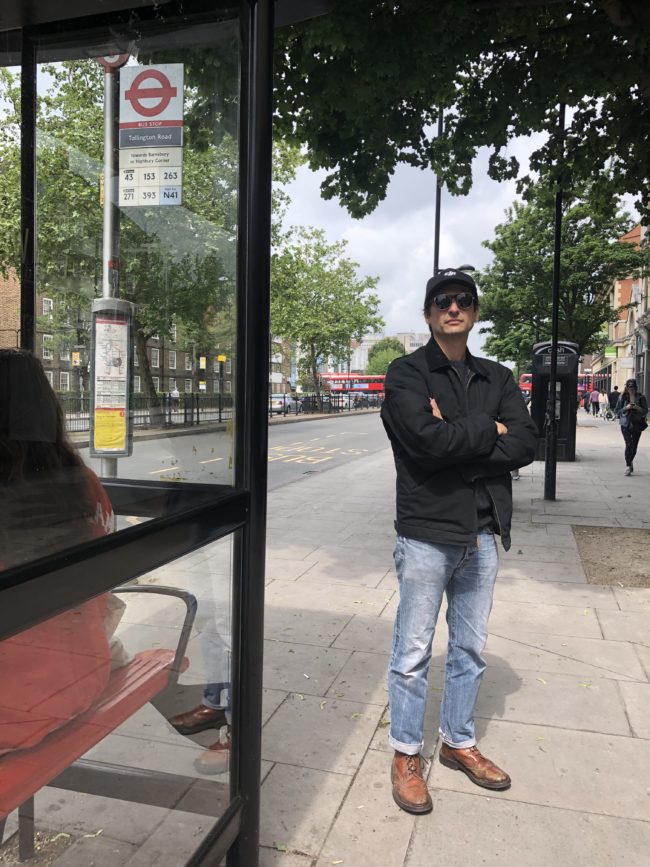
As soon as we got to discussing American politics, (Hugo grew up in NYC, but has lived in England since 2007,) he just kept talking about “Divide and Conquer,” shaking his head.
Like, could you Americans be so stupid as to fall for this shit again?
He and I commiserated, as when we were at Pratt, in the early aughts, Post-Modern theory was all the rage then as well. Identity politics were a part of it, but back then, it was more Derrida-heavy.
Like, “Nobody can say anything about anything, because all language is a loaded construct. Every single word can be deconstructed, so nothing means anything in the end.”
It depends upon your definition of the word “is.”
That sort of thing.
These days, it’s been taken a step further, to become: “Nobody can say anything about anything that is outside their personal construct of: gender, class, social status, sexual orientation, race, age, etc.”
Strategically, “Divide and Conquer” works, which is why some rich folks dispatched Steve Bannon over to Europe to organize the far right groups, and simultaneously attack European Unity.
(If you’ve been reading the news, it’s been working. Beyond Italy and Germany and France, even in England, Nigel Farage’s new Brexit Party is thriving.)
But in the American left, and especially in media and the arts, identity politics taken to this extreme is literally succumbing to a divide and conquer strategy.
I’ve written about this stay-in-your-lane-ism for several years, and was perhaps early in identifying it. So let me be the first to say, I think the wave may be cresting.
These ideas were so out there, so front-and-center at Photolucida last month, I expect that we might see a restoration of balance, with respect to any room for concepts of Universalism, or General Humanism, within the photo community.
(Has the shark been jumped?)
At the reviews, multiple photographers showed up at my table near tears, or having recently been in tears, as their work had been attacked for being improper, based upon who they were.
I really don’t know how many people I met who told me their photographs had been considered controversial because they weren’t of a certain ethnic or racial group, or class, so they should not be commenting outside their lane.
Lots of hurt feelings, that’s for sure.
Part III
Why ask these questions?
Why go here today?
Well, we’ve found ourselves in Part 1 of The Best Work I Saw at Photolucida, but we’ve done it in a round-about way.
Rather than do a book review, or show you jpegs of portfolios, we’re going to take a short look at three books that ended up in my bag during the week.
The first is “Across the Omo Valley: The Ethnic Groups of Southern Ethiopia,” which I was given during a review by Kelly Fogel.
Now, Kelly was obviously white, and seemed to be a young Jewish-American woman from LA. (She later added that she’s blonde.) Kelly sat down to show me photographs from Africa that seemed to hybridize fashion and art into hip, stylish documents.
I liked the photographs right away, on merit, but could see where the problem was.
Which Kelly quickly confirmed.
She said something along the lines of “What is a white, blonde female photographer from California allowed to shoot these days?”
It’s a paraphrase, yes, but I heard some version of that sentiment again and again. In each case, I assured the photographer that I was open-minded, and willing to consider their work in the context they presented to me.
(I got a lot of smiles of relief each time I said that.)
Ideas flow in cycles, just like politics, and life itself.
I agreed to show Kelly’s work here on APE immediately, but it wasn’t until this morning that I re-discovered she’d slipped me a slim book, and I’m happy to share it with you here. The text pages confirm that Kelly works with organizations, and teaches teens.
Now that I think about it, both of the other books I’ll show today were slipped to me by friends, one old and one new, and they both made it into the same little bag I raided this morning, looking for a story to write.
First off: “Days on the Mountain,” by Ken Rosenthal, published by Dark Spring Press in Tucson.
Ken, like Hugo, has made appearances in the column before, as he was with me on that legendary, (and scary as Hell) meth-town-pit-stop in Van Horn, Texas on the way to Marfa.
We’ve been doing these stories here for 9 years now, and I’m lucky to have had friends who pop up now and again over time.
With Ken, though, I haven’t seen much of him the last few years. You’ll have to trust me that he’s been dealing with some really difficult family issues. The kind of shit you wouldn’t wish on your worst enemy.
He’s also a guy I helped get out of a mugging in Tucson back in 2010, and he recently had his next-door-neighbor accidentally shoot a shotgun shell through his wall, right above where his young daughter sleeps.
In other words, luck is not always kind to Ken.
But he’s also a very successful artist with gallery representation, exhibitions, books, you name it.
All the trappings of success.
So when he gave this book to me, I teared up as I flipped through it.
The work was just so different from what I was used to seeing from him. It’s raw, and personal in a way that stripped back artifice.
It’s as close as a diary-for-sanity as I’ve seen, (given that I know him,) and the beauty of the book felt sweeter to me, knowing it was well-earned.
Bugs and bats and bees and trees.
Nature and forest and summer in Washington as salvation.
Not a bad way to kick off the post-Memorial Day weekend summer season.
But I like to keep it real, so rather than end typically happy, like Hollywood would, I’m going to finish up with a Hollywood story, but not the one you’re expecting.
On the first morning of the festival, at the first reviewer breakfast, I had a date to meet and chat with Alison Nordstrom, and she kept a seat open for me as a result.
Next to my reserved seat was a young guy I hadn’t met yet: Gregory Eddi Jones, an artist, writer, educator and publisher based in Philly.
He got his MFA at the Visual Studies Workshop, and was a part of a Rochester-NY-educated crew that I’m just learning exists in the wide Photo Land.
Greg and I hung out a few times, and I got to see some of his new work, which is currently being exhibited at the Foam Talent exhibition in London.
In Portland, on the last morning of the event, just as people were departing, Greg gave me a copy of his 2014 book “Another Twenty-Six Gas Stations.”
(Pause.)
OK. Did you have your judgmental thoughts yet?
About how nobody can possibly bring anything new to Ed Ruscha’s classic-LA concept?
Are you done?
Because I had the thought, and I saw it flash before a few peoples’ eyes when I described the book to them too.
But…these are screenshots from gas station surveillance video feeds broadcast online.
The mayhem and horror predate the Trump era, obviously, because the project is 5 years old. Yet it feels so NOW, so of the moment, so “Cops” on Molly laced with fentanyl.
I love it, and I bet you will too.
See you next week.


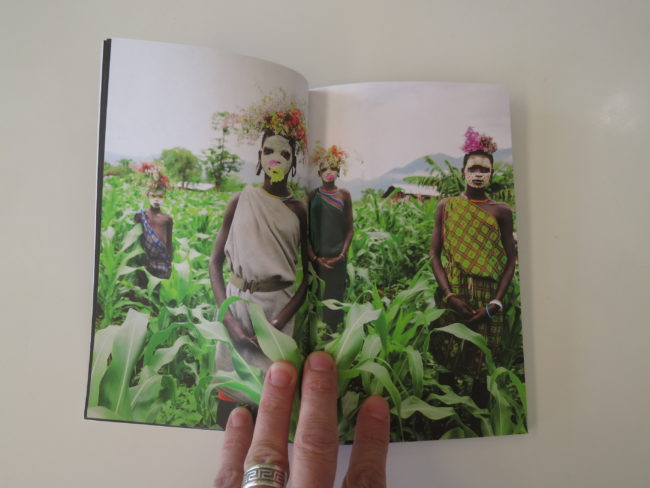
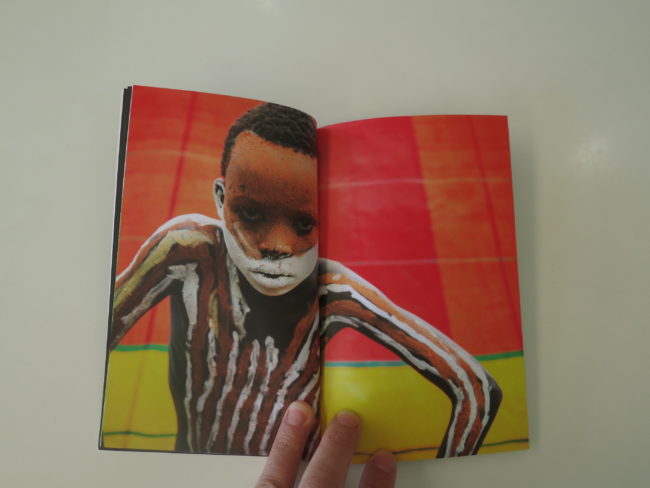


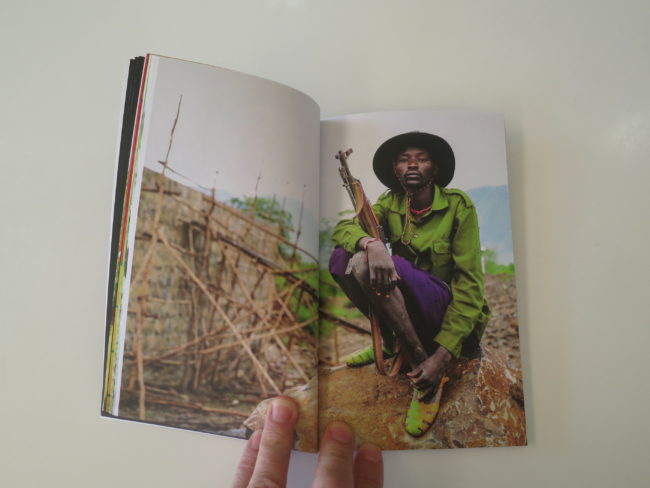
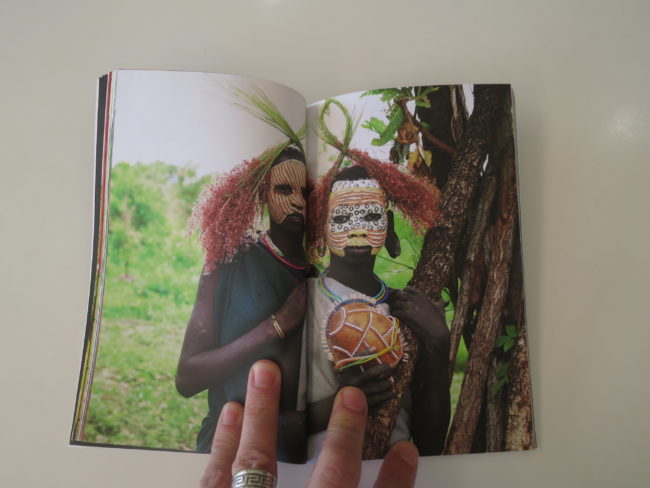

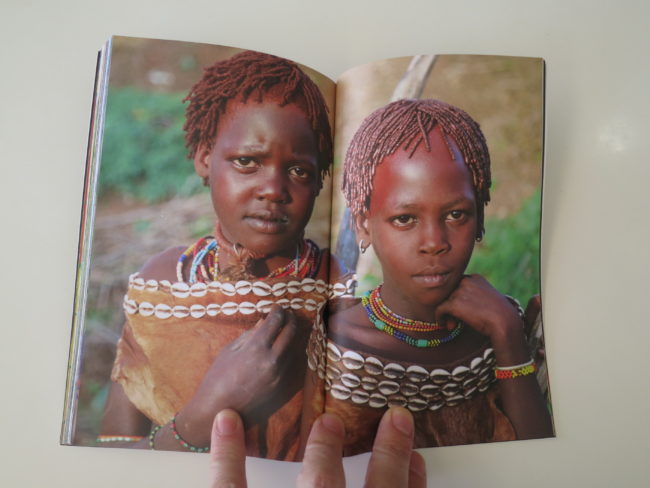

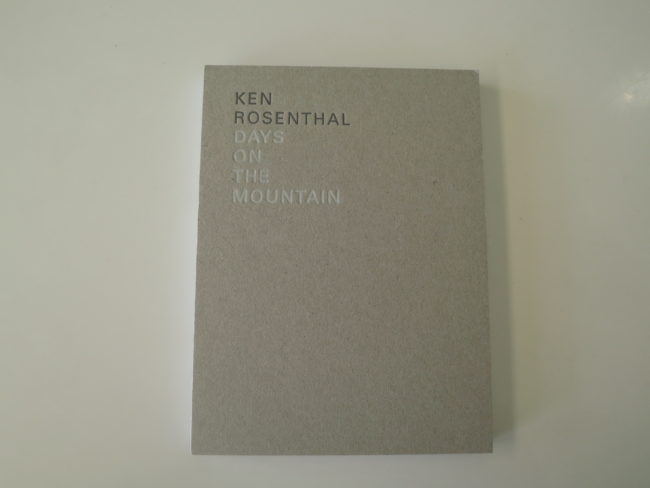
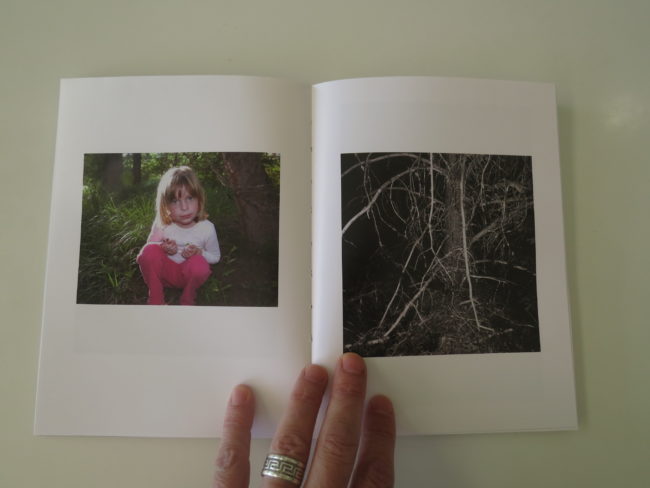
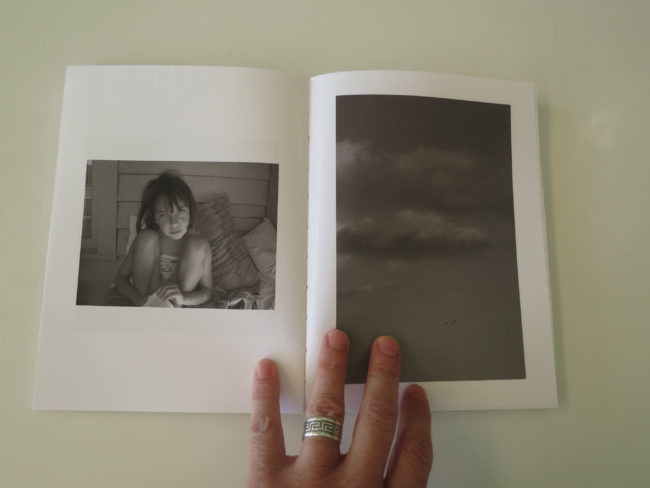
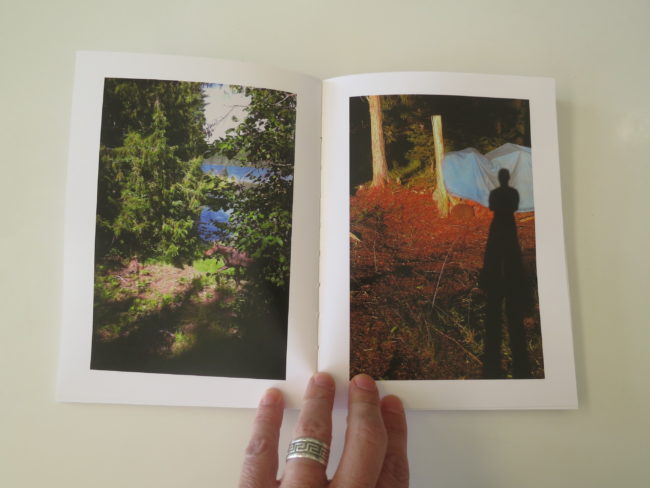

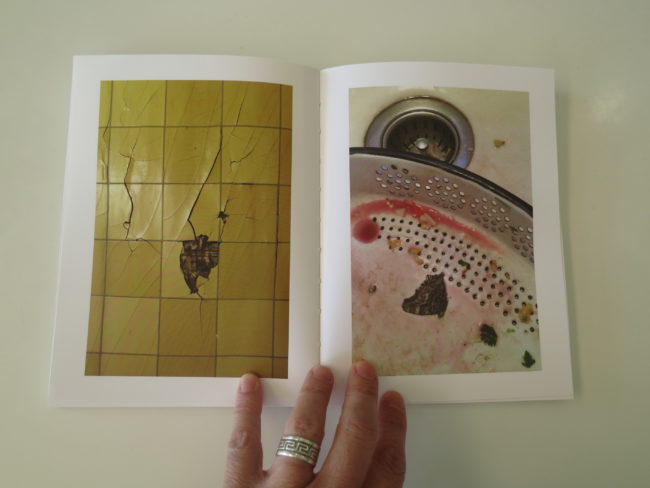

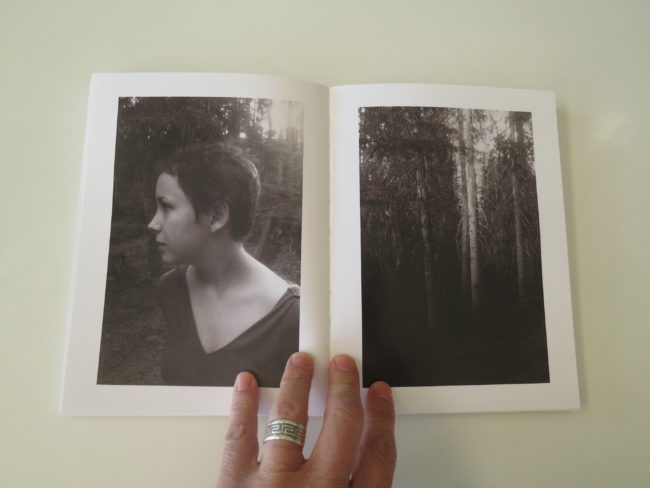
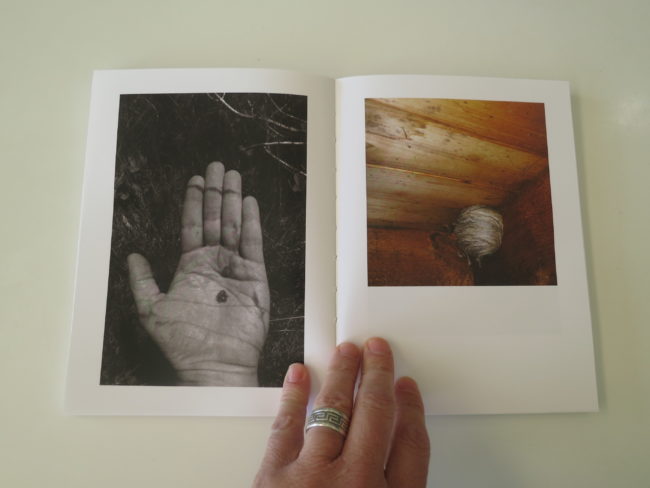
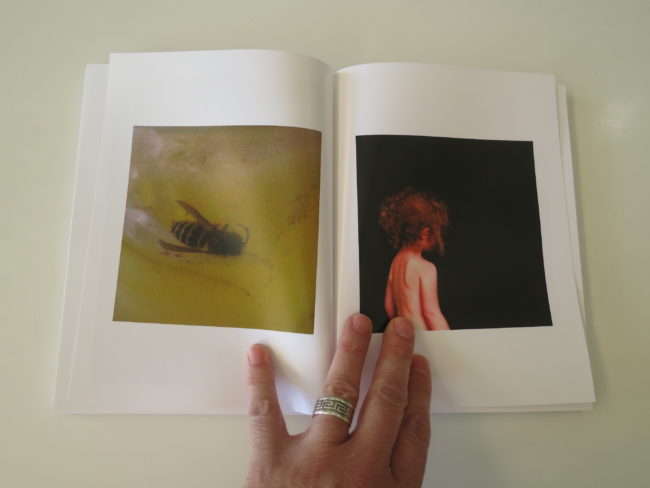

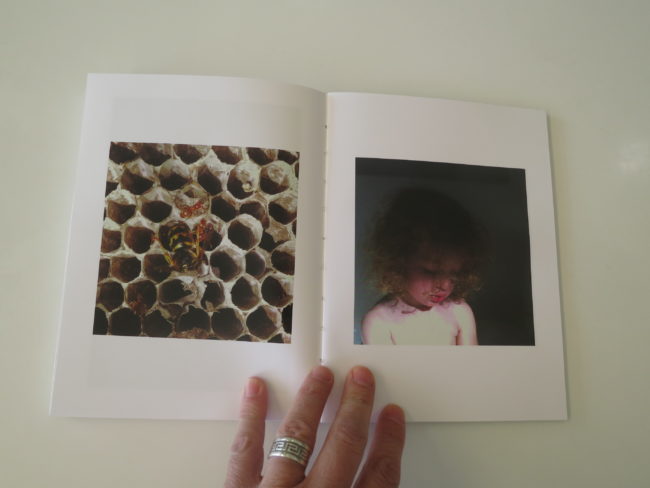
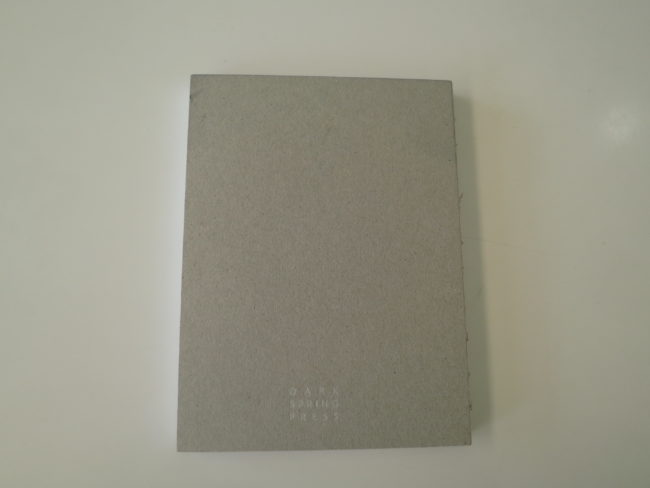
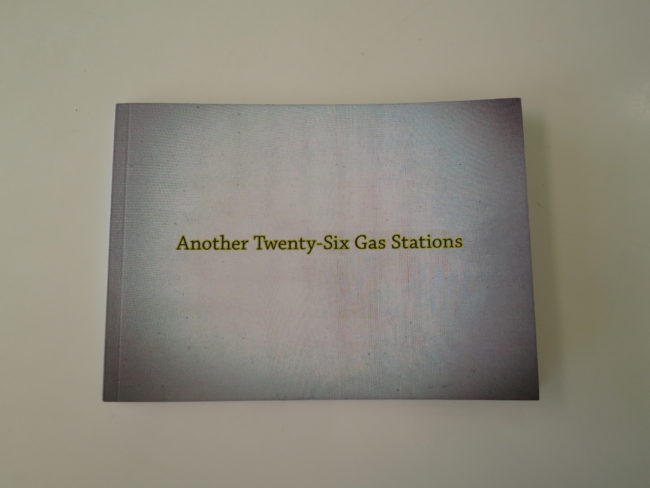

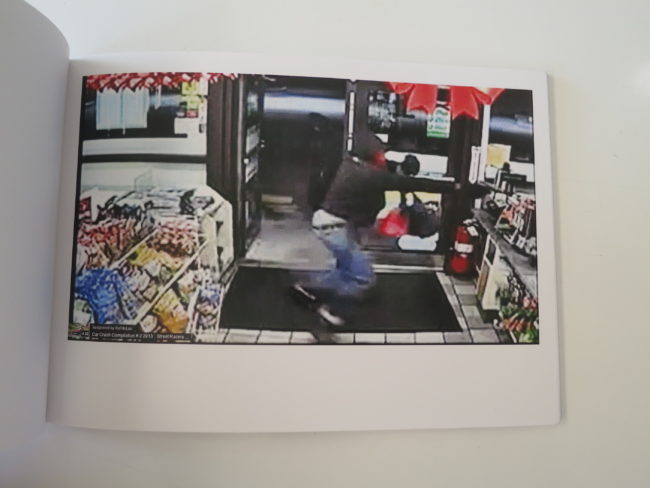
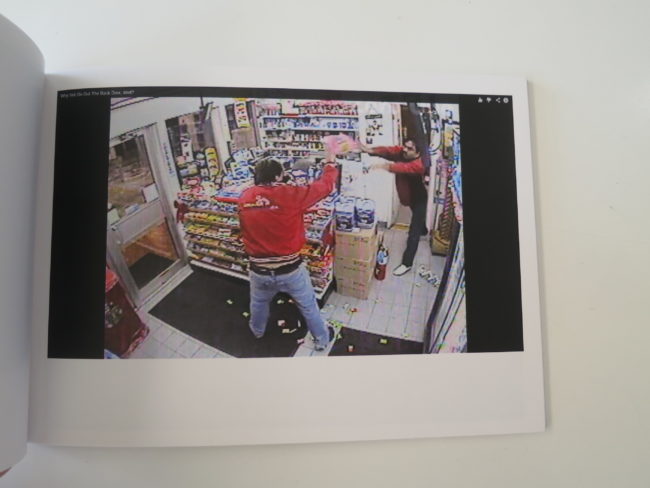


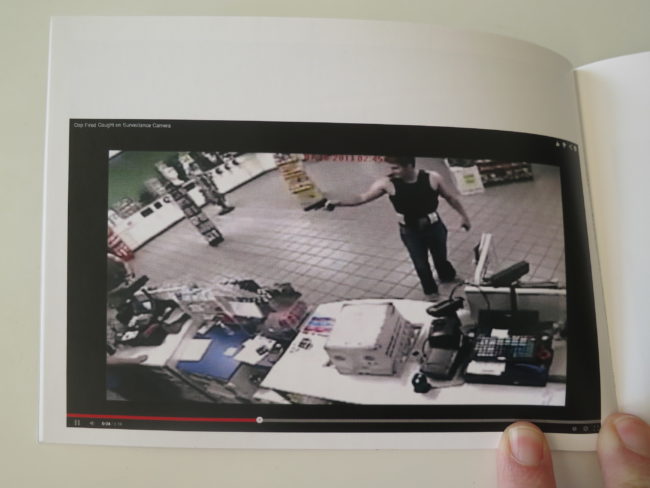
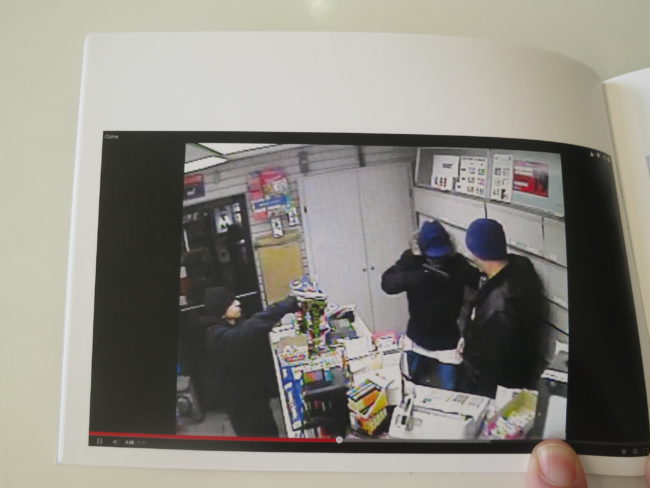
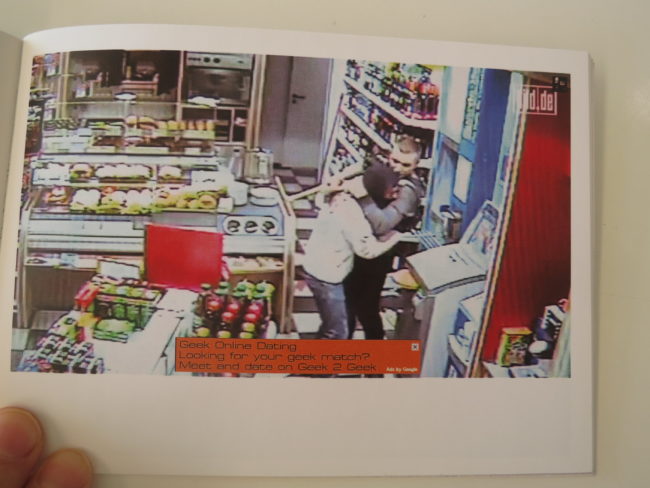
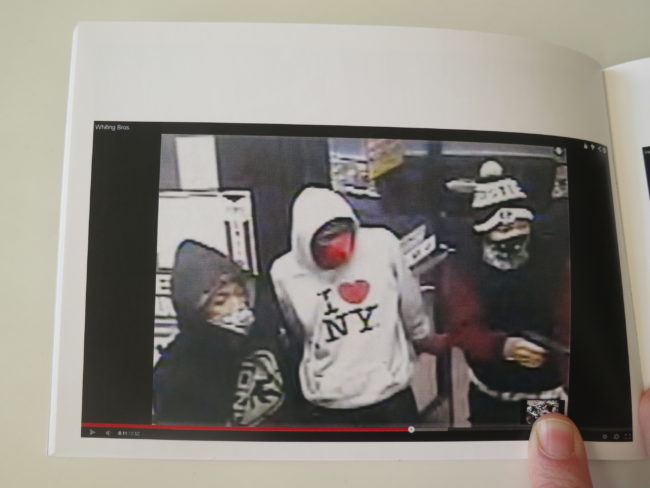
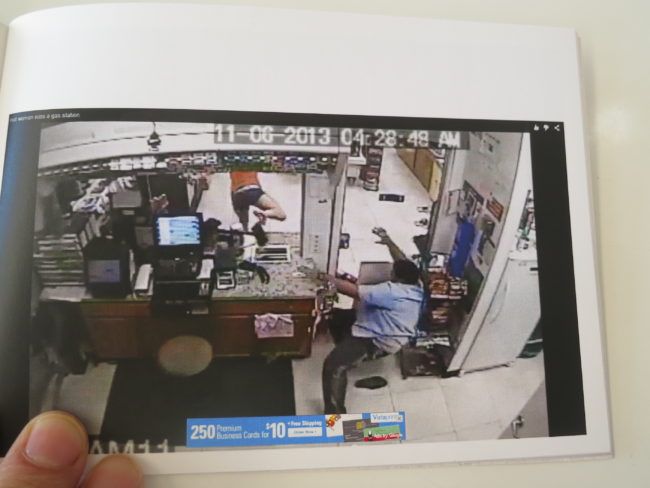
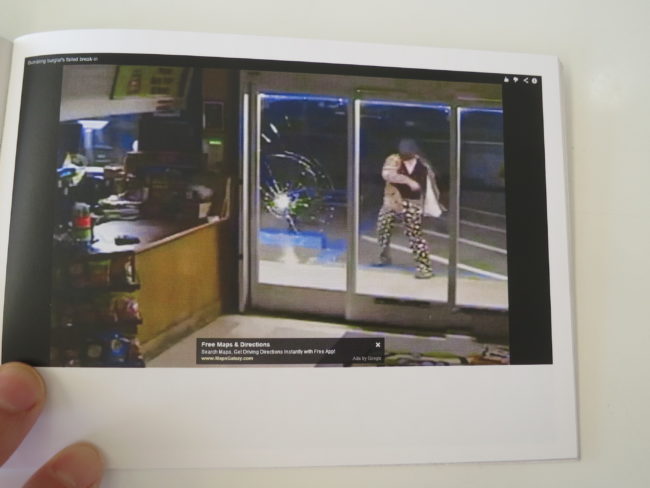
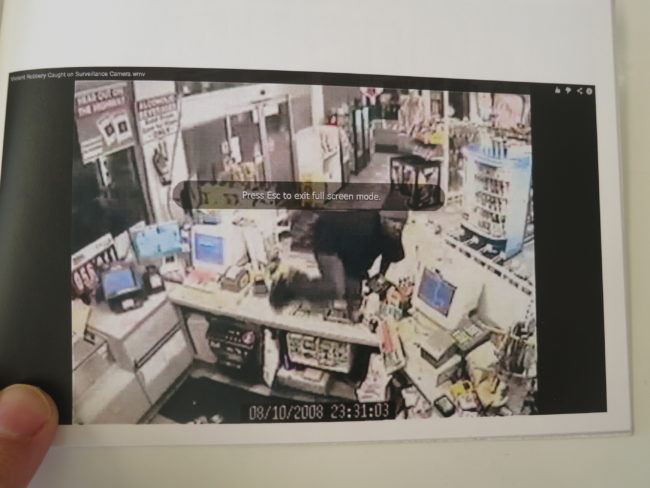
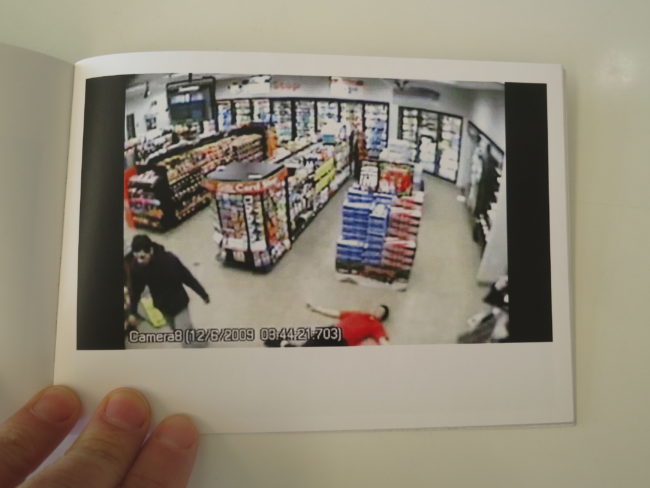
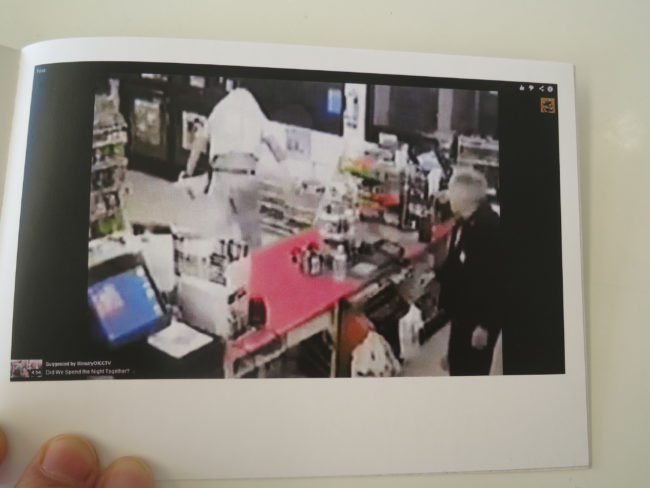
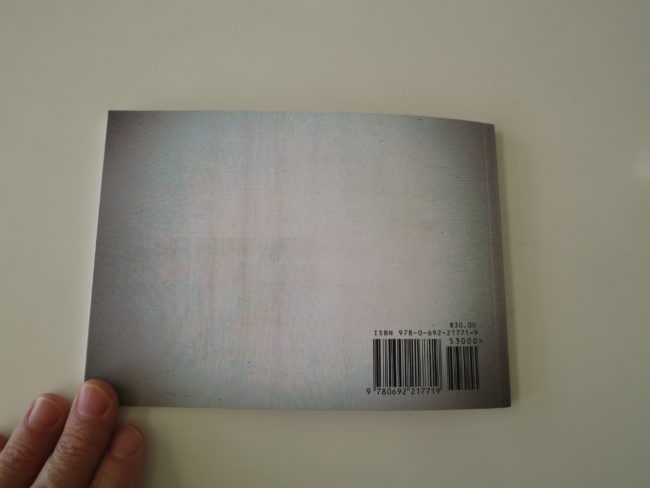
4 Comments
Sorry, if deemed cold, callous and cruel- but I can’t take the lamentations of a published and exhibited photographer all that seriously. Right or wrong, you don’t expect to get challenged in life?
Dude, I hear you. But it’s not my place to disclose what Ken went through. I do think my credibility is good with you, though, and you with me. Trust me. Guy’s been through hell.
Fair ‘nough…
Amazing. What a way to end. Thanks so
Much for sharing.
Comments are closed for this article!